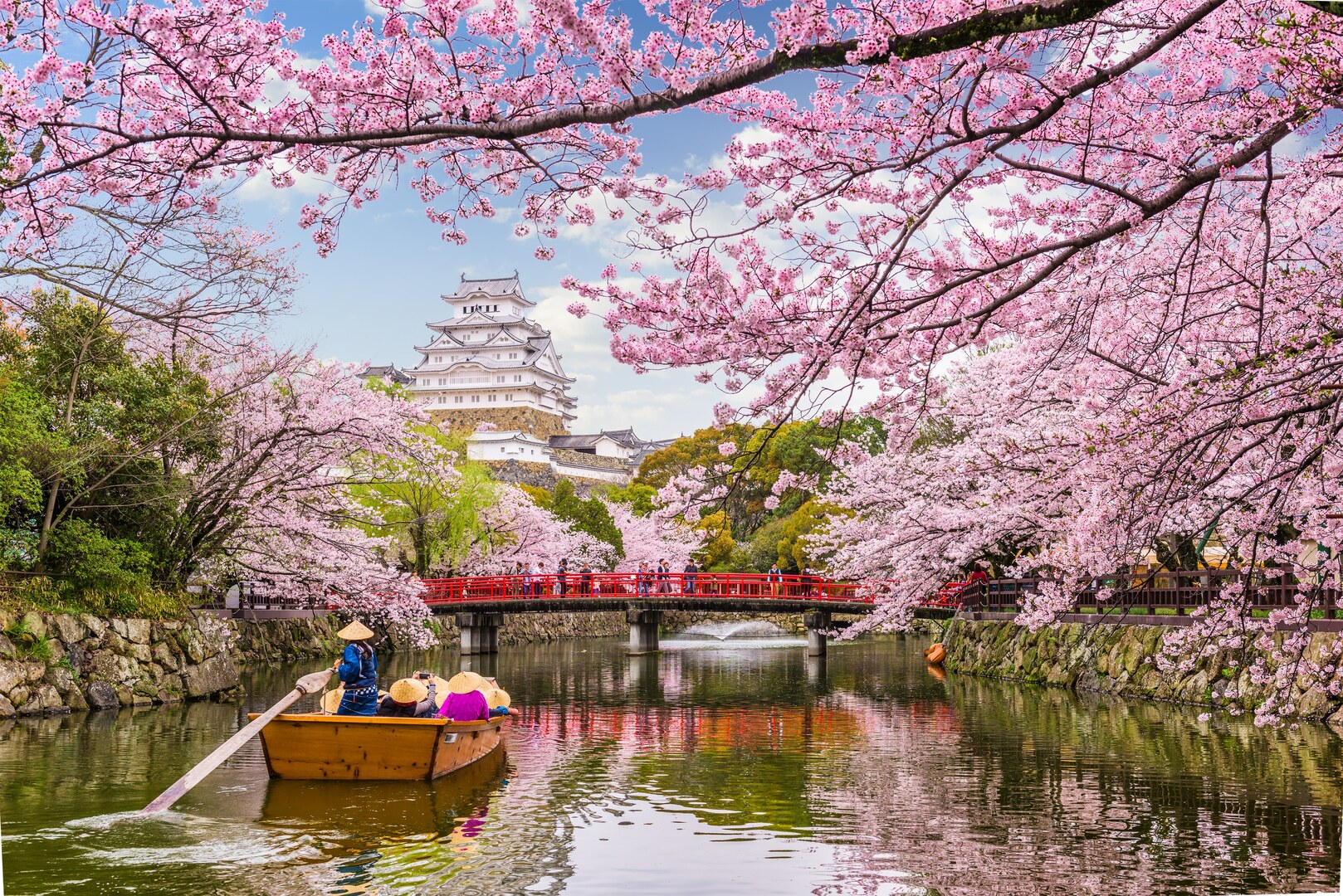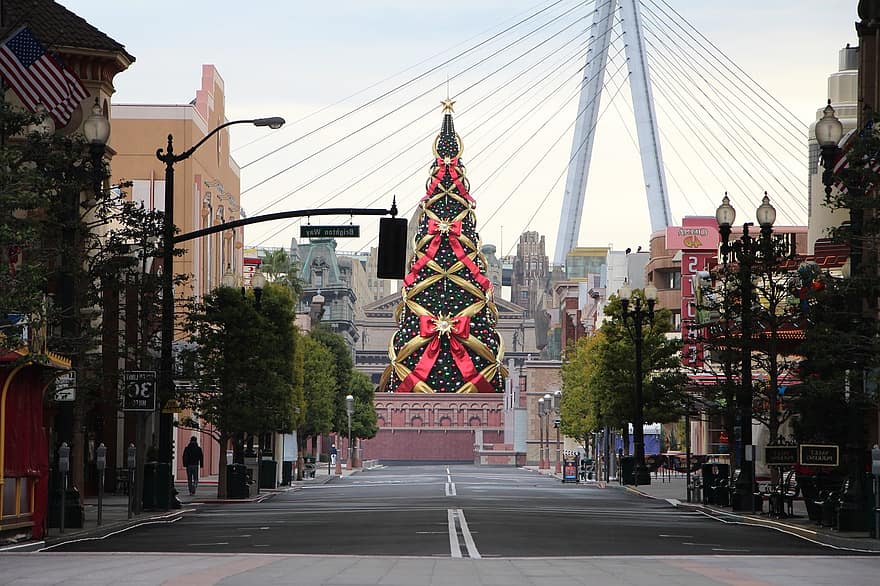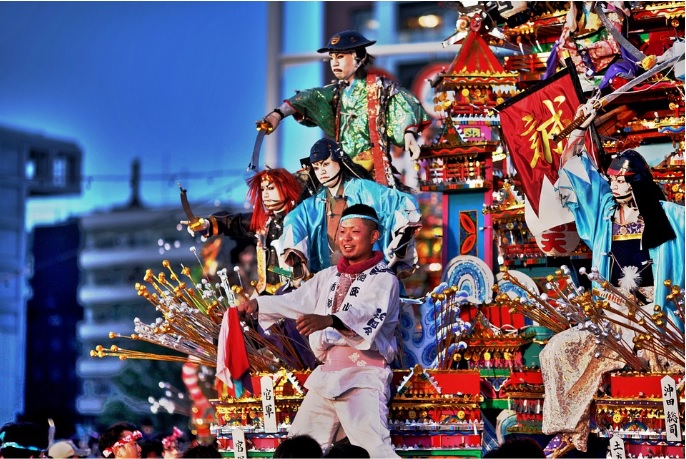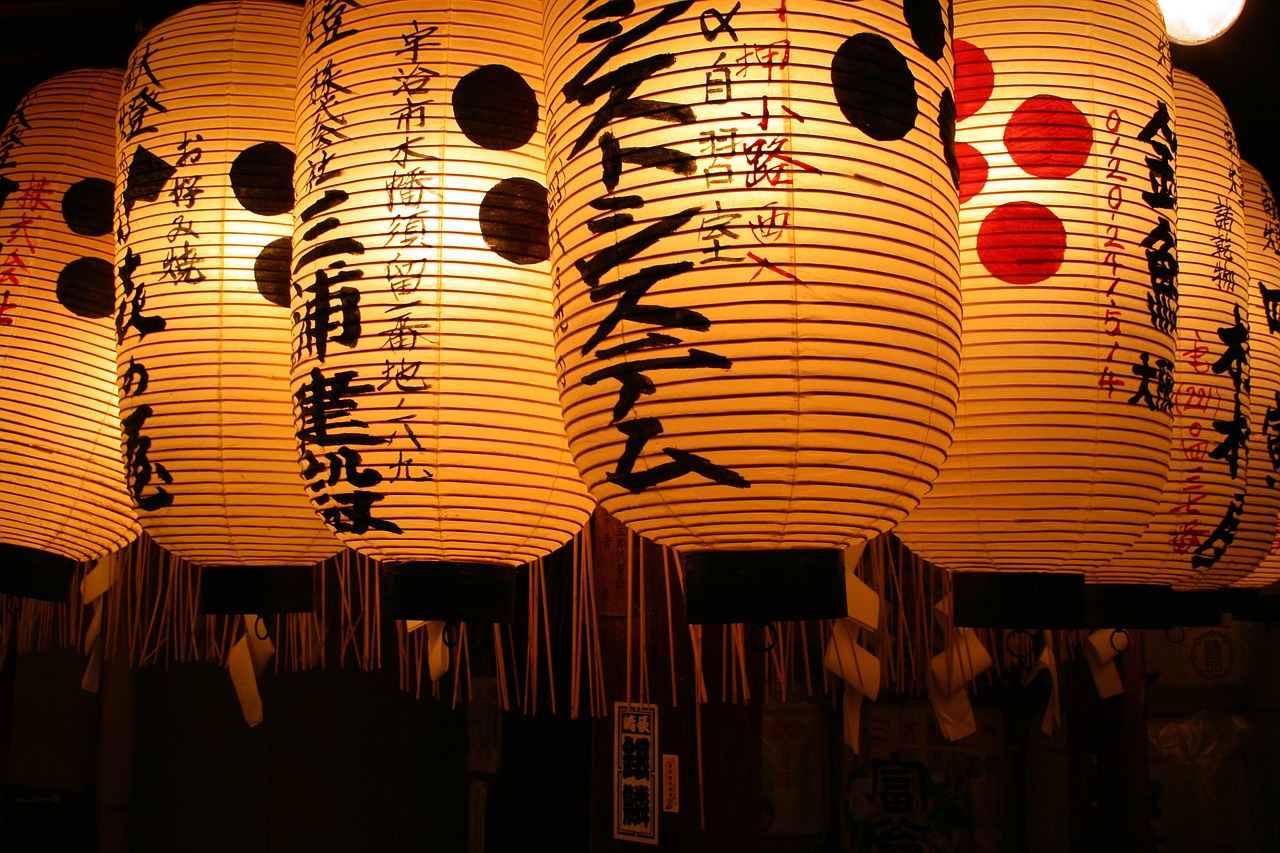
There are still remnants of the past still existing in the present. One of those is the use of the traditional lighting equipment we know today as lamps and lanterns. They are still visible wherever you go in Japan. You can see them hanging in temples, shrines, in the streets and in front of restaurants. It comes in different colors, sizes and forms but it serves one purpose -- to illuminate dark places.
Lanterns are made up of lightweight bright colored papers lit by candles or burning oil inside. Lamps on the other hand can be made up of wood or metal. They are either standing in poles or hanging like lanterns.
These are the traditional lighting equipments that can still be seen in Japan today:
1. Andon - It is a type of lamp where a paper is stretched over a frame of bamboo. The purpose of paper is to prevent the wind from blowing the flame out.
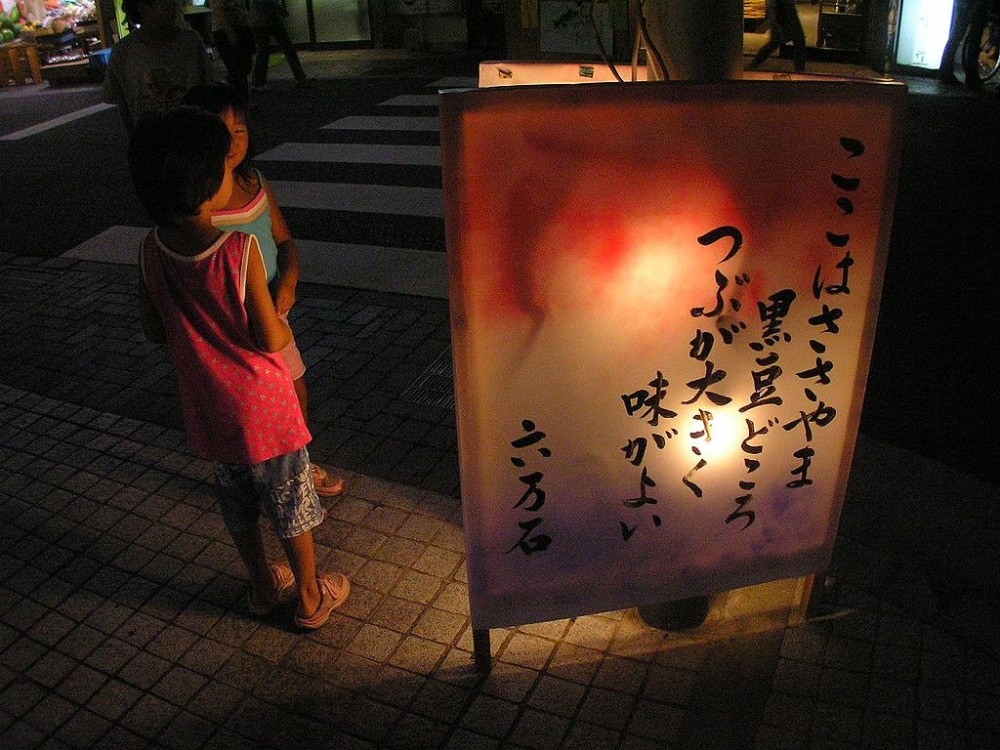
Photo by Yume no sanpo. Licensed under Creative Commons.
2. Bonbori - A hexagon-shaped lamp lit by a candle oil, which are usually visible in temples and shrines. Bonbori gets more popular every Bonburi Matsuri, where artists gather to create 400 bonboris to be displayed at the shrine grounds.
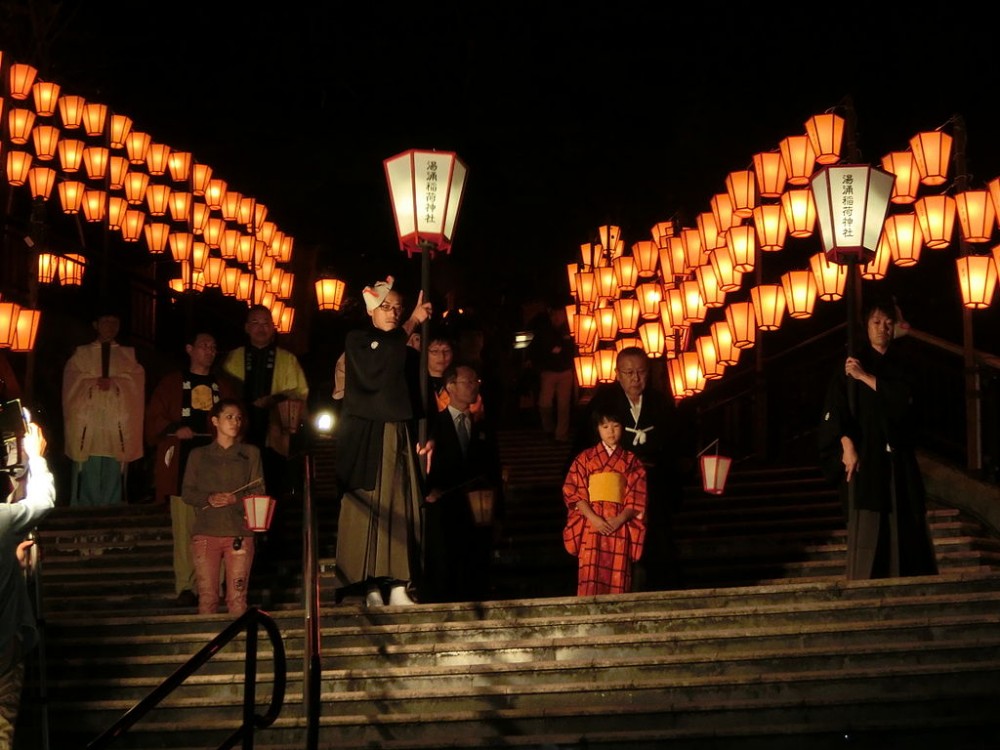
Photo by Fumon1987a. Licensed under Creative Commons.
3. Chochin - Here’s the first traditional paper lantern that Japan had, dating back to 1085. It is made up of paper or silk and a bamboo as support. The famous Chochin lantern today is the one hanging in Sensoji Temple weighing, 700 kilograms.
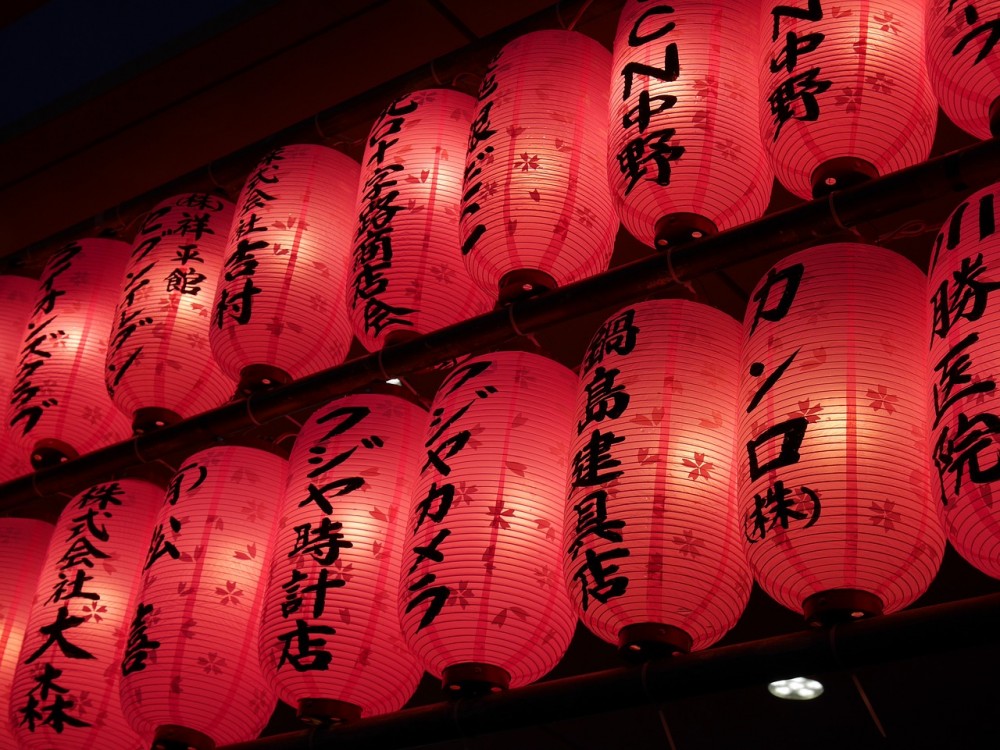
4. Toro - It is a traditional lantern made of wood, metal or stone. Toro illuminates Buddhist temples and other shrines and gardens.
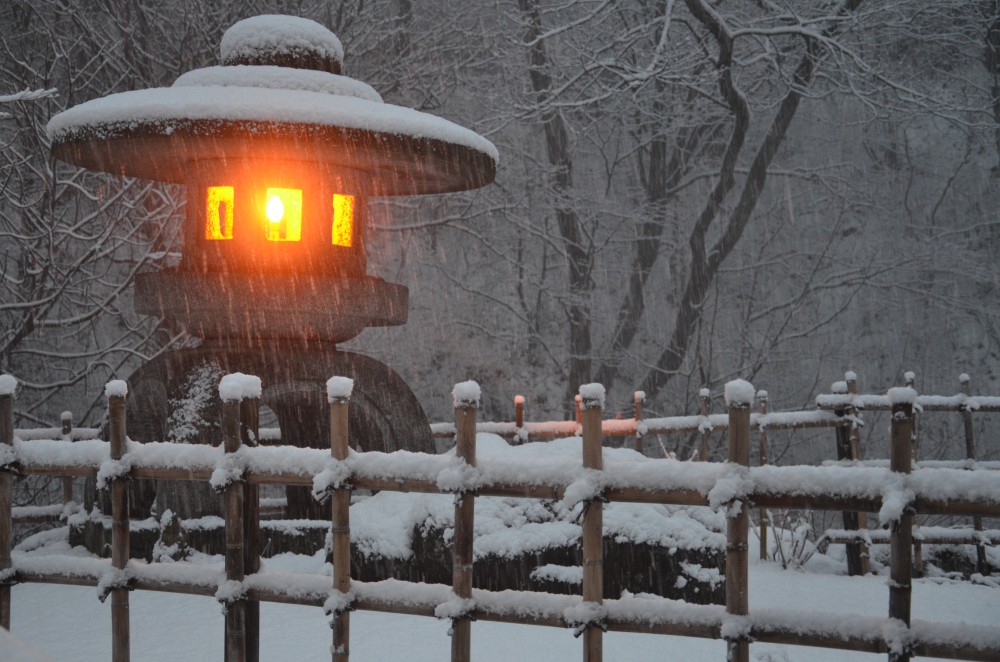
With the advent of streetlights and modern illuminations, Japan makes sure to preserve their culture, using traditional lighting equipment.
